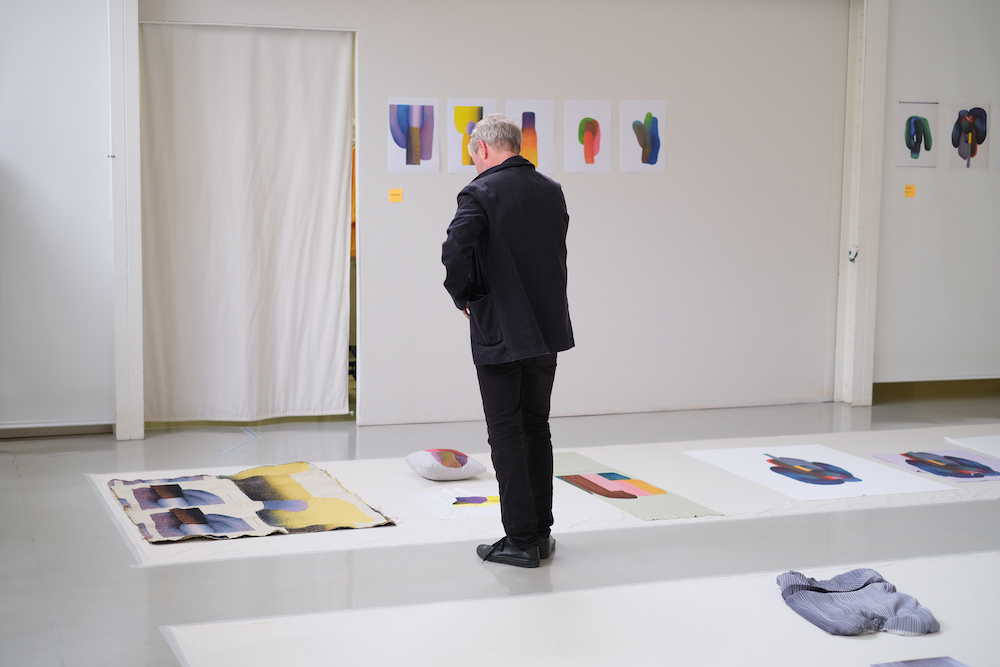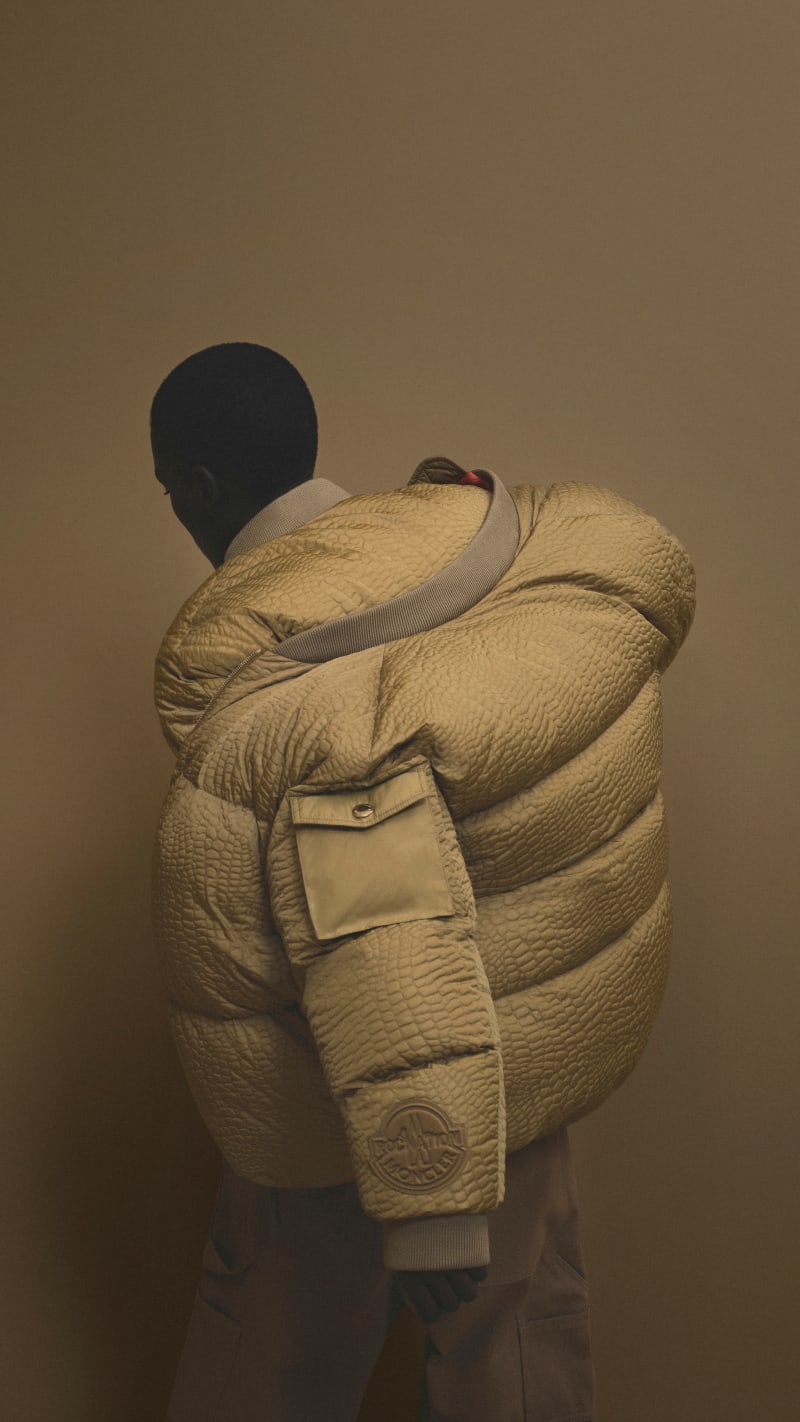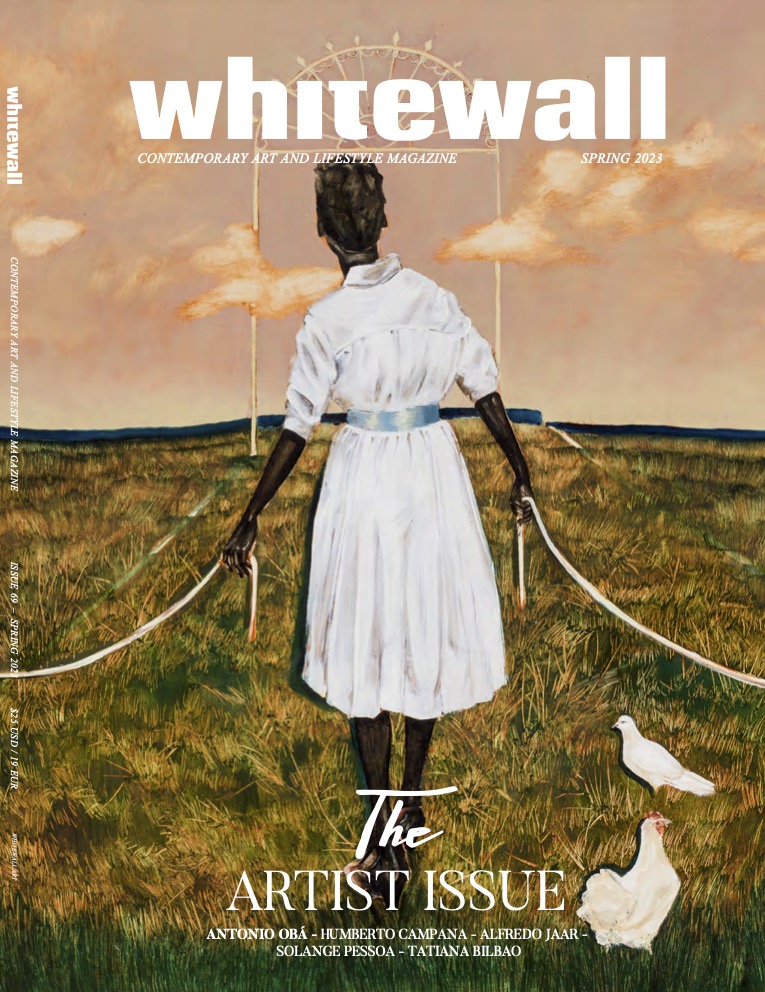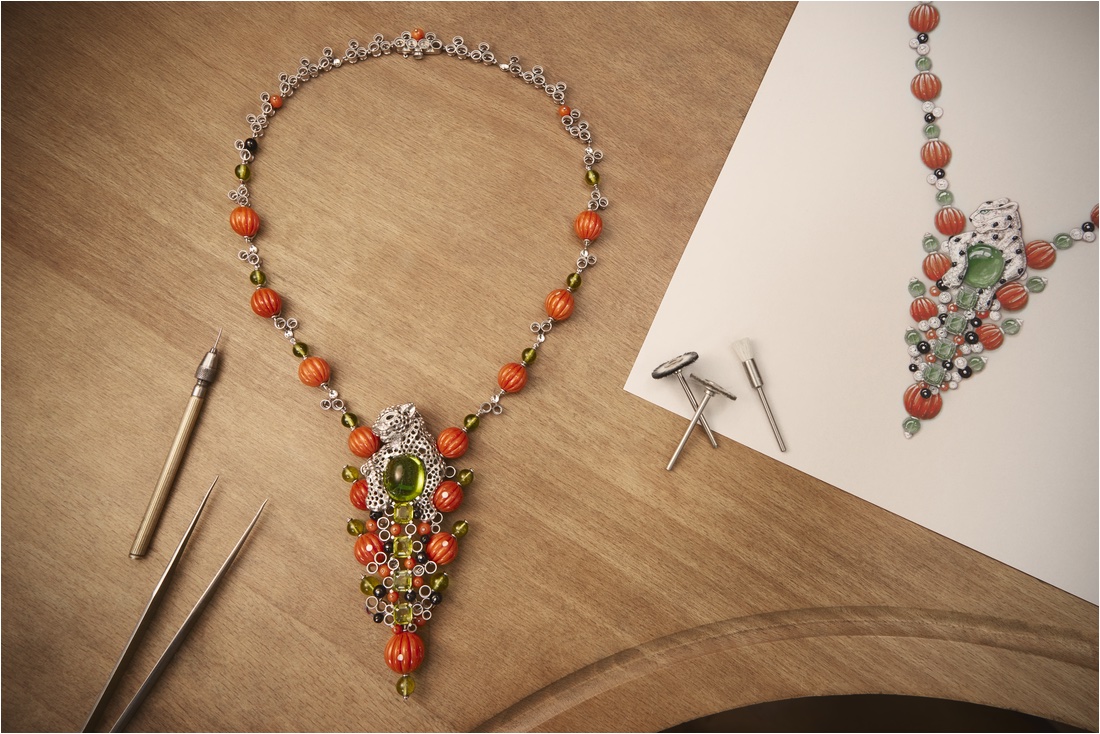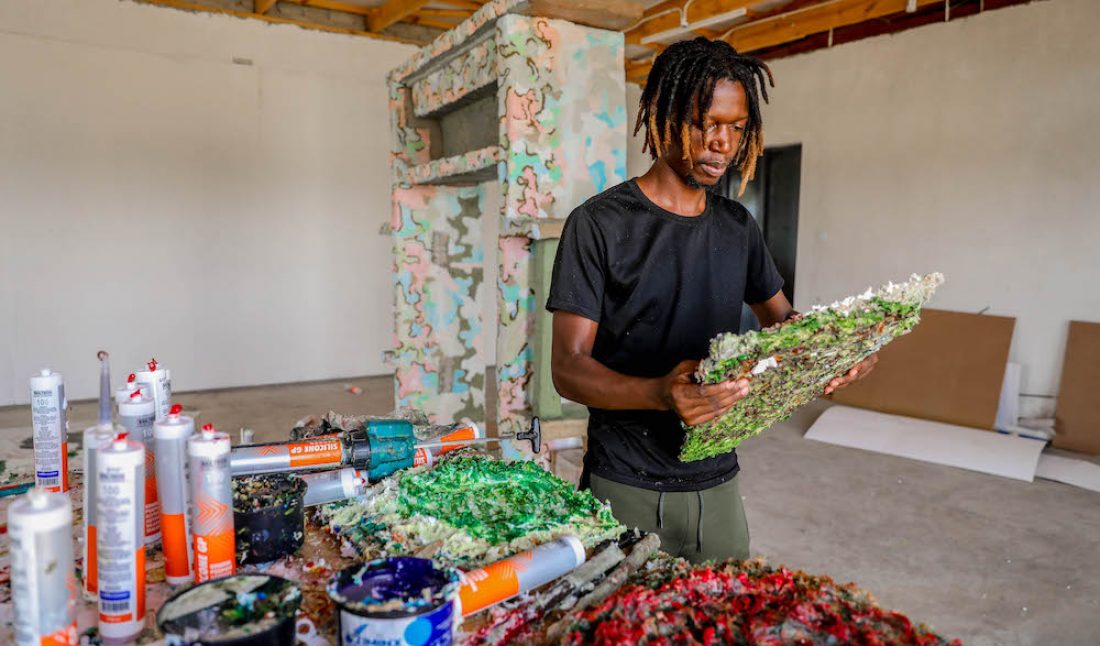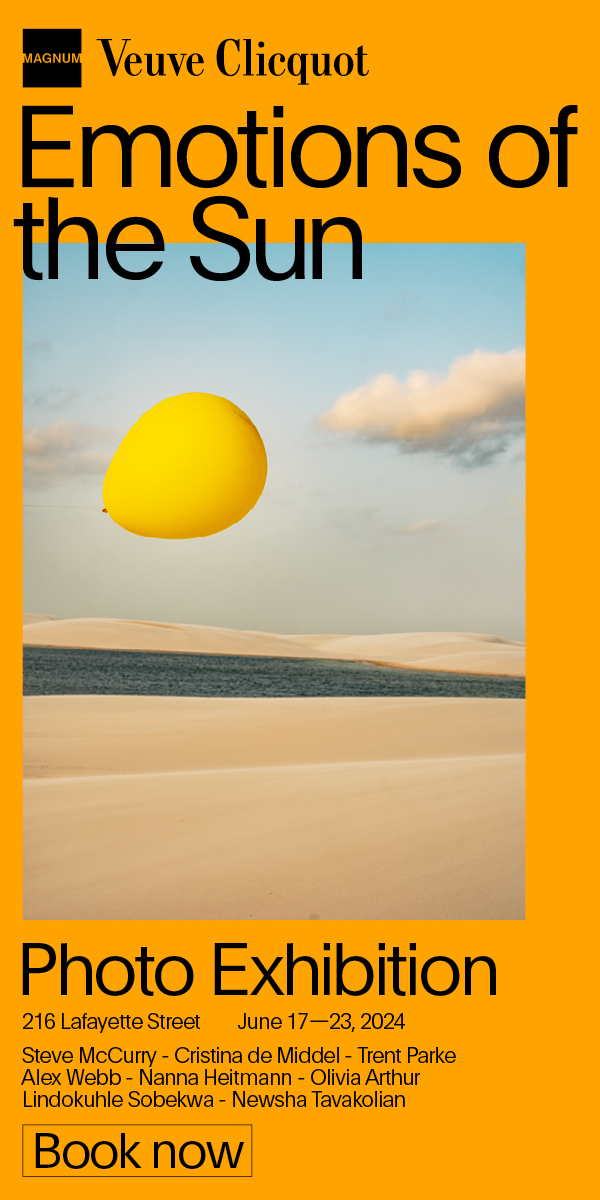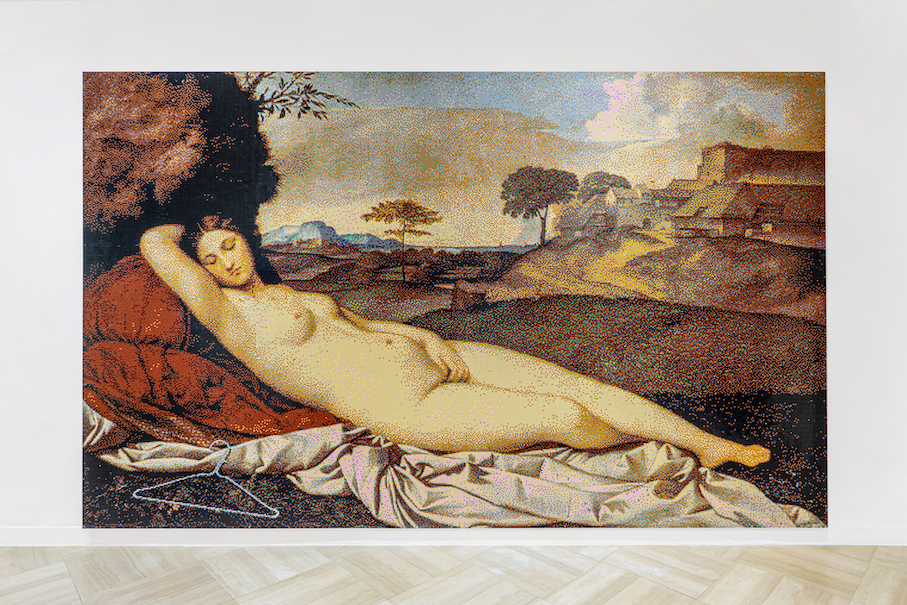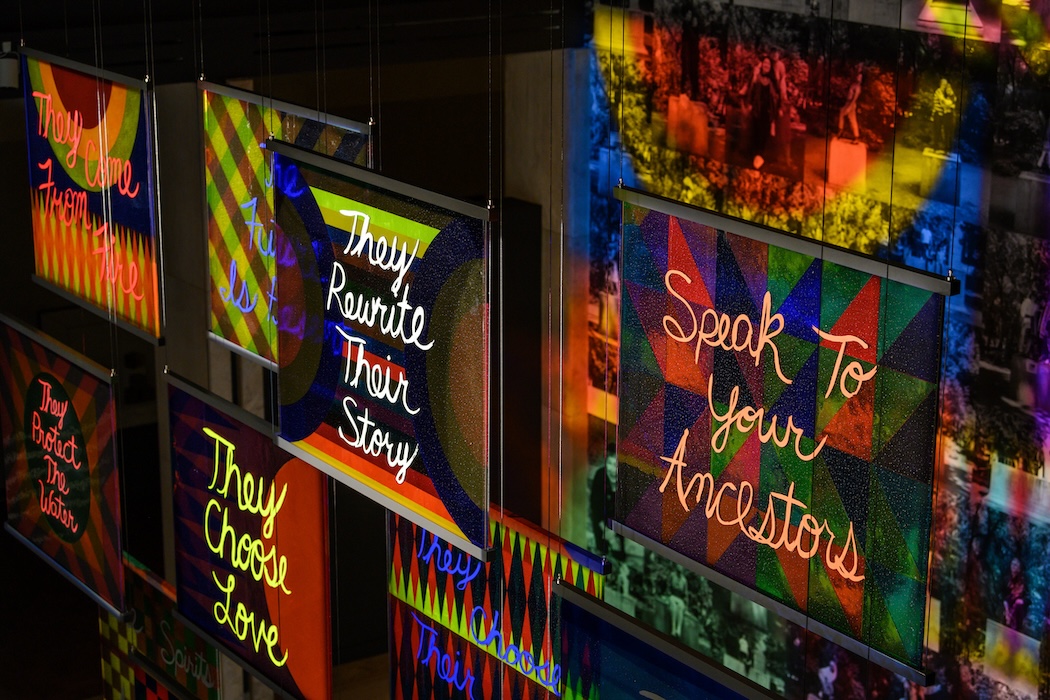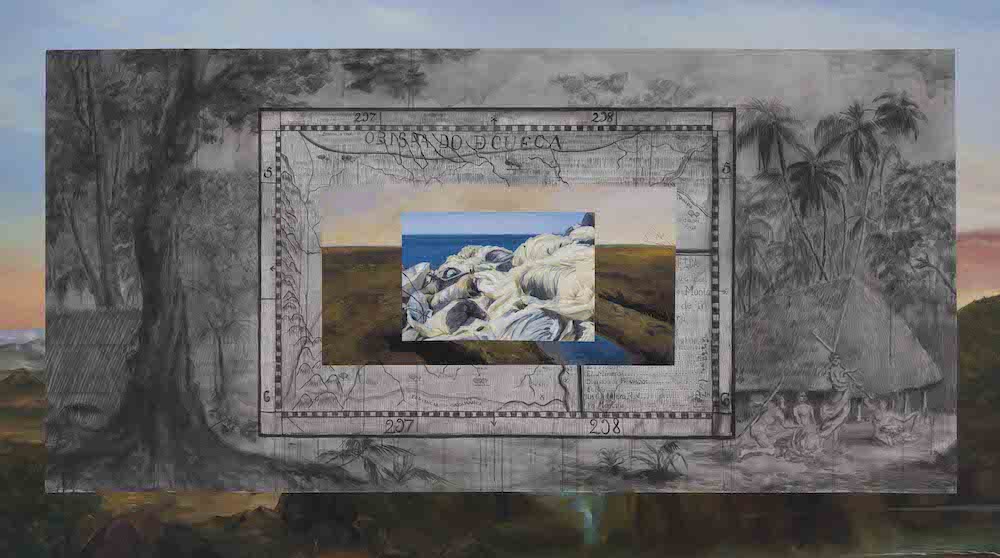As they step into the halls of the Zimbabwe Pavilion at the 60th International Art Exhibition in Venice, viewers are transported into a realm where tradition dances with innovation, and imagination knows no bounds. Here, amid the tapestry of cultural exploration, Troy Makaza’s presence is unmistakable, his artistic vision interweaving threads of Zimbabwean heritage with the vibrant hues of contemporary global discourse. Curated by Fadzai V. Muchemwa, and commissioned by Raphael Chikukwa, the Zimbabwe Pavilion presents Makaza’s work alongside that of artists Moffat Takadiwa, Sekai Machache, Kombo Chapfika, Gillian Rosselli, and Victor Nyakauru.
Makaza studied at the National Gallery School of Visual Arts and Design, and his artistic journey has been marked by a relentless pursuit of creative exploration. His mastery of blending inks, tints, and industrial silicone has led to him to create visually striking and tactile works that transcend conventional categorization. Through pieces like Camo division labour Part 1 and Camo division of labour Part 4, Makaza delves deep into the complexities of Zimbabwean society, offering poignant reflections on political, cultural, and economic dynamics.
Beyond the borders of Zimbabwe, Makaza’s talent has captivated audiences on a global scale. With exhibitions spanning from Australia to Los Angeles, his work serves as a powerful embodiment of the universal language of art. Through inventive use of materials and a fearless embrace of cultural fusion, he continues to push the boundaries of artistic expression, inviting viewers to embark on a journey of introspection and imagination. In the Zimbabwe Pavilion and beyond, Makaza’s artistry leaves an indelible mark, challenging us to reimagine the world around us and envision new possibilities for the future.
Makaza sat down with Whitewall for an interview, sharing insights into his artistic practice and vision.
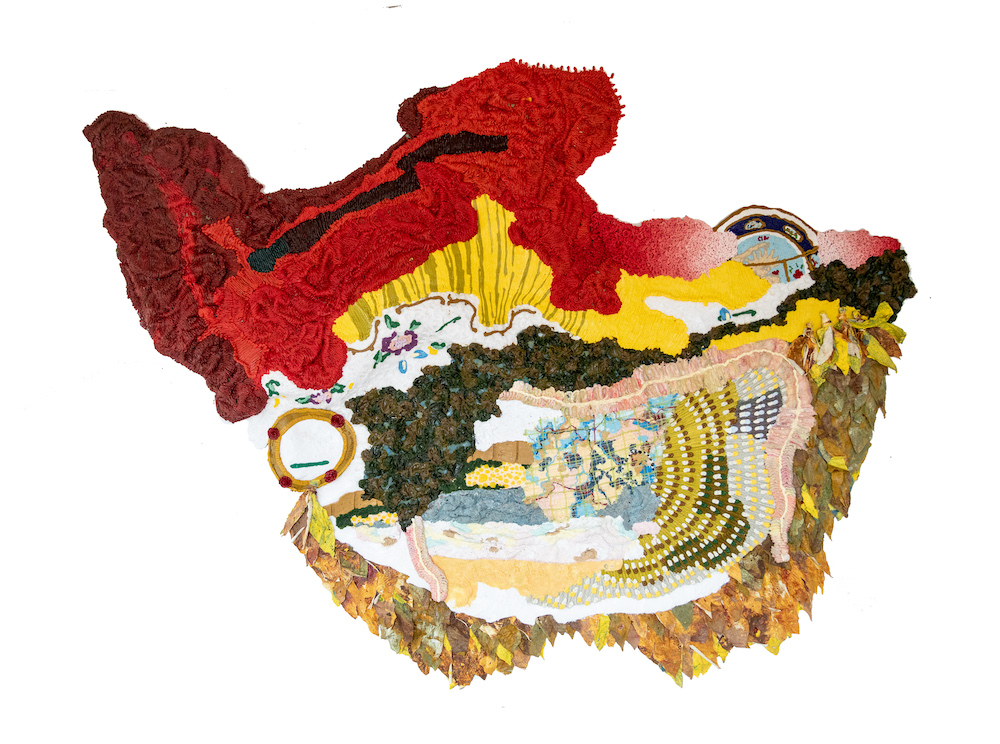 Courtesy Galerie Poggi and First Floor Gallery, © Rodney Badza.
Courtesy Galerie Poggi and First Floor Gallery, © Rodney Badza.
Troy Makaza Gives Voice to Zimbabwe on the Global Stage
WHITEWALL: Your work often explores the intersection of traditional Zimbabwean symbolism with contemporary global themes. How does your participation in the Zimbabwe Pavilion at the 60th Biennale di Venezia reflect this fusion of cultural influences?
TROY MAKAZA: It begins with an idea of what it is, an idea of what I would like to create; perhaps something cool, something related to the current global stories. Growing up, there were numerous childhood influences on TV: Western cartoons like “Snow White,” “Peter Pan,” and the enchantment of Disneyland. All these cartoons were Eurocentric. Also during primary and Secondary school, history lessons mainly focused on the West, with just a little bit of African history. The core subjects, such as mathematics and sciences, were taught in English, whereas they should have been taught in local languages like Shona. Numbers and geography could have been explained in the local language. My art is concerned with trying to record and rewrite some of these histories, presenting them to the world in all their complexity and nuance. It’s not just about creating visually striking pieces; it’s about giving voice to Zimbabwe and the untold stories that deserve to be heard on a global stage.
WW: It is so fascinating that your artistic practice involves blending inks, tints and industrial silicone to create visually striking and tactile works. How did you develop this unique technique, and what inspired you to explore this medium?
TM: In Zimbabwe, I attended the School of Visual Arts and Design, which is run by the National Gallery of Zimbabwe. I majored in painting and sculpture, but I was always drawn to materials beyond the traditional ones like oil paints, acrylics and metal for sculpture. I sought out materials that allowed me to express myself more fully. During my time at the art school, I introduced fiberglass and molding techniques.
After completing art school, I apprenticed with one of Zimbabwe’s influential artists, Moffat Takadiwa, who also used non-conventional materials like keyboards, toothbrushes, and bottle tops in his work. Despite my love for thick textures and the use of oil paints at that time, financial constraints pushed me to explore alternative materials.
Living with my family, I observed my father using silicone to repair household leakages. The texture and pigments left behind by the silicone reminded me of oil paint, sparking my experimentation with it. I began mixing silicone with various pigments, eventually integrating this technique into my artistic practice.
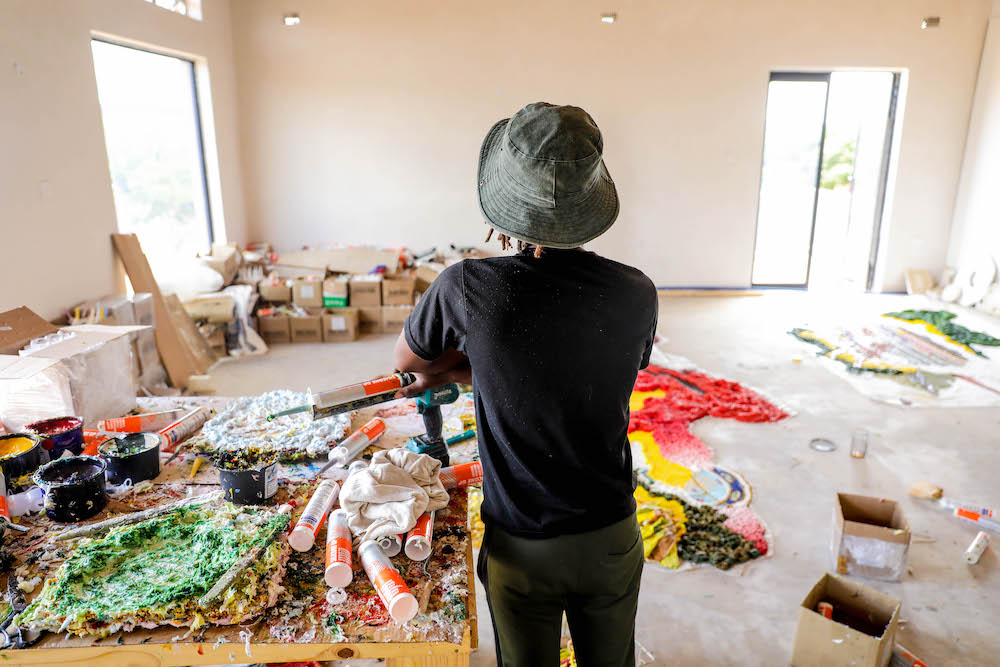 Courtesy Galerie Poggi and First Floor Gallery, © Rodney Badza.
Courtesy Galerie Poggi and First Floor Gallery, © Rodney Badza.
The Genesis of an Artwork
WW: Your works are known to defy formal categorization, blending diverse cultural, historical and political influences. Could you share more about your creative process, and how you navigate these complexities within your art?
TM: When I embark on creating a new piece, I start with an idea, often something personal rather than explicitly political or cultural. For instance, I might be moved to create by the fluctuating price of bread, a consequence of Zimbabwe’s unstable economy. This personal reaction becomes the genesis of my work. I also have a diary where I record the narratives that resonate with me on a profound level.
In my view, even seemingly mundane subjects like food are inherently political, as they are entangled with issues of ownership and distribution. Consequently, my creative process becomes a means of exploring these political dimensions.
Once I’ve identified an idea, I translate it into a sketch using my iPad. This initial sketch serves as a blueprint, allowing me to refine the composition and color scheme before bringing the piece to life. However, the process is not always straightforward. Sometimes the pigments don’t behave as expected, introducing an element of unpredictability into the work. Additionally, my impatience can lead me to experiment with the materials while they’re still drying, resulting in unexpected textures and effects.
Creating the right mood is crucial to my process. Depending on the piece and my state of mind, I may spend anywhere from a few days to a month working on it. To aid me in the process, I employ assistants in my studio, typically students who are learning the craft and have no access to a formal art education. They help with the manual aspects of the work, such as filling silicone tubes, in exchange for materials, studio space and their basic needs.
Throughout the process, music plays a significant role. I select music based on my mood, ranging from fast-paced beats to Zimbabwean melodies. Certain music, particularly that which induces a trance-like state, can be especially helpful during creative blocks or when I’m striving to complete a piece. One music artist I frequently turn to for this purpose is Thomas Mapfumo.
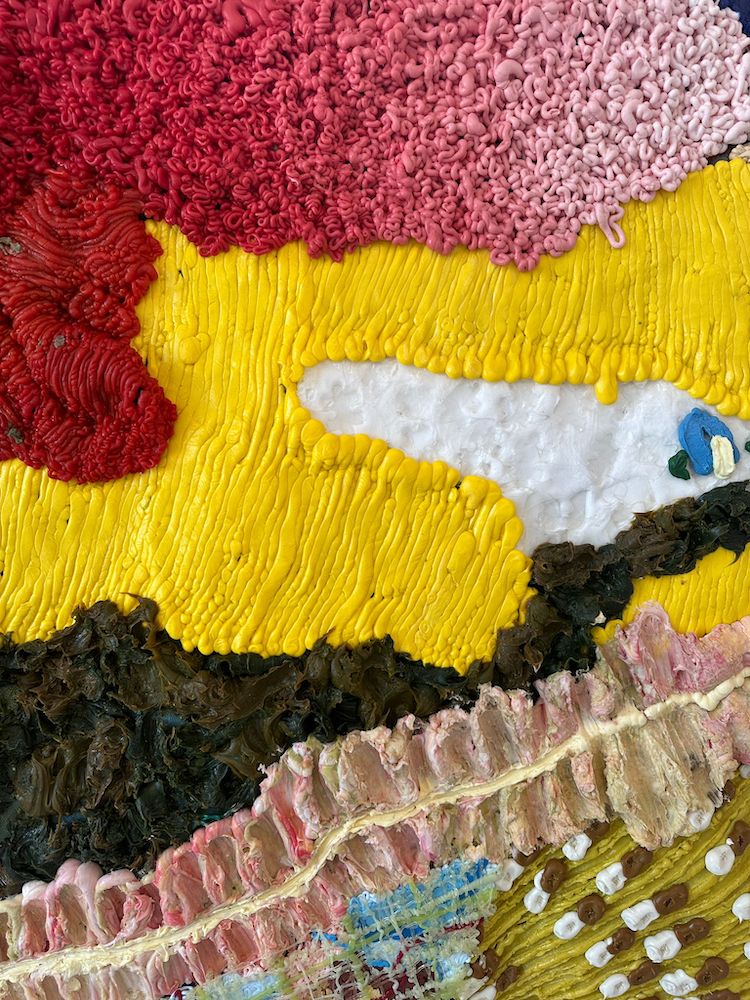 Courtesy Galerie Poggi and First Floor Gallery, © Galerie Poggi.
Courtesy Galerie Poggi and First Floor Gallery, © Galerie Poggi.
WW: As one of the leading figures in the emerging art scene in Southern Africa and Zimbabwe, how do you see your role in shaping the contemporary art landscape of the region?
TM: In the diverse art landscape of Southern Africa, my role is akin to igniting a fire, making the smoke visible to distant observers, and striving to understand the evolving dynamics of the region. This approach guides my actions and contributions. That’s my approach to the matter.
WW: Could you share any specific challenges or inspirations you encountered while preparing for this exhibition at the Biennale?
TM: Definitely, there were a couple of challenges. The Venice Biennale is a significant event in the art world, attracting global attention. This brought a lot of mental pressure for me. I questioned whether I should create something entirely new or experimental, or if all this pressure was justified. What if I didn’t create the right work? Exhibitions offer ample time for preparation, yet the pressure remains constant, especially at a prestigious event like the Biennale. Ultimately, I decided to stick to what I know best and avoid creating something artificial.
Moreover, there’s the challenge of adhering to the initial theme, often set by the government commissioning the work. This sometimes requires being politically correct, which can be limiting. The presence of censorship adds another layer of complexity. While you aim to express something meaningful, there’s the reality that your message may be distorted or censored. This discrepancy between expression and reality presents a significant challenge in navigating the Biennale’s context.
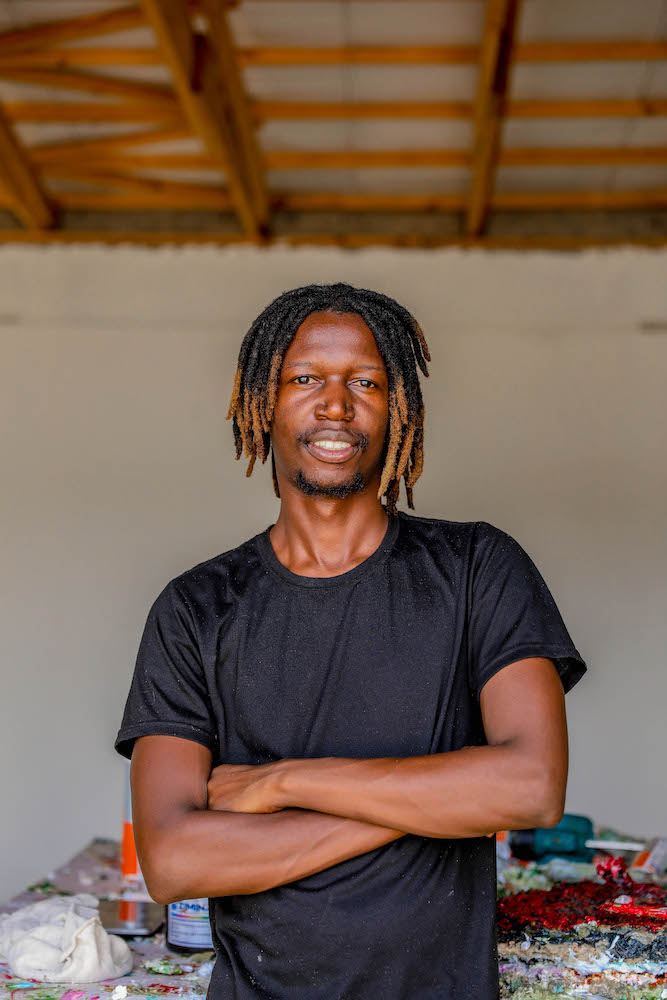 Courtesy Galerie Poggi and First Floor Gallery, © Rodney Badza.
Courtesy Galerie Poggi and First Floor Gallery, © Rodney Badza.
What it Means to Be a Born-Free Zimbabwean Artist
WW: Your recent exhibitions have been showcased in various international venues and art fairs. How does your experience participating in the Biennale differ from other exhibitions, and what significance does it hold for you as an artist?
TM: Representing your country is an important task, so representing Zimbabwe for me came with many questions and challenges. I debated whether to convey the Zimbabwean story or my personal narrative. Eventually, I realized that as a born-free Zimbabwean, someone born after the country’s independence, I belong to that generation. My story began on a national level before evolving into a universal one. Participating in the Venice Biennale helped me grasp how systems function, so to speak. I aim for viewers to perceive my work as that of a Born free Zimbabwean artist. I want them to comprehend the experience of being born in Zimbabwe and to witness the art of a Zimbabwe-based artist. Because I am an artist first, before I am an African artist. So there is always this fine line that I need to define. I have to get these things straight, so to speak.
WW: Reflecting on your artistic journey so far, what do you hope your body of work communicates to audiences both locally and globally, beyond the context of this Biennale?
TM: This is a challenging question! For me, art embodies a life of its own. As an artist representing Zimbabwe, my work delves into both local and global issues. From food security to land use, and the pressing concerns of global warming exacerbated by misguided political decisions, my aim is to engage with these crucial narratives for humanity.
Moreover, I aspire for my work to resonate on a deeper, more personal level—to touch the inner soul of the audience. I seek to evoke the innocence and wonderment of childhood experiences, the joy of receiving one’s first flowers and the universality of human emotions. Despite the ever-changing landscapes of geography and culture, there remains a common thread of shared human experiences that transcends boundaries.
In my artistic process, I find inspiration in titles that capture the essence of a concept or emotion. While I used to devise titles before creating the artwork, I’ve since realized the importance of allowing the creative process to unfold organically. Like a musician attuned to their instrument, I immerse myself in the creation process, listening to the ‘tune’ of the work as it evolves. Only then do I discern a suitable title that encapsulates its essence.
This fluidity in my approach—where creation and titling are intertwined—is about giving my work authenticity. My approach is akin to a symphony conductor orchestrating a piece. If the ‘tune’ resonates harmoniously, I proceed with confidence. However, if discordance arises, I embrace the opportunity for refinement and adjustment, ensuring the final composition reflects my vision and intent. So, I like to incorporate this fluidity into my work, the titles and myself. I create the work, listen to it and then give it a title.
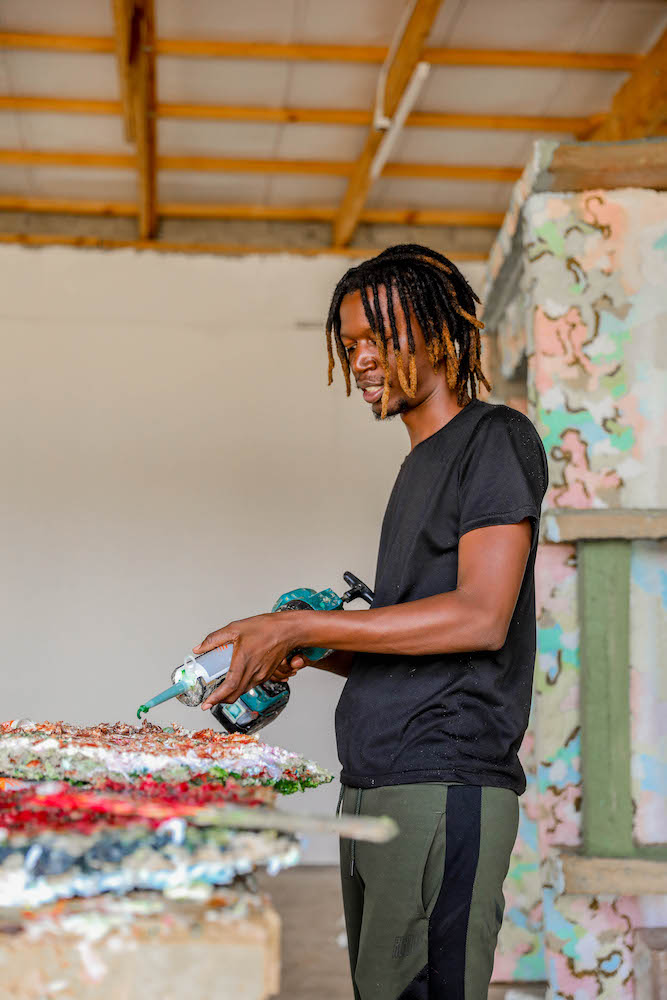 Courtesy Galerie Poggi and First Floor Gallery, © Rodney Badza.
Courtesy Galerie Poggi and First Floor Gallery, © Rodney Badza.



